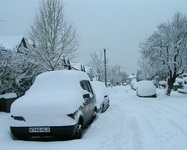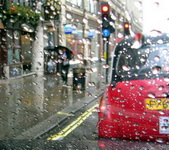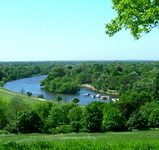Dave the Taxi Driver's
 Guide to London
Guide to London




|
|
||||
|
Dave the Taxi Driver's |
||||
|
|
|
|||
 |
 |
 |
 |
|
Weather in London
I think it was Samuel Johnson that first said that ‘when two Englishman meet their first talk is of the weather’. Not his most profound statement, but nevertheless that is what usually happens. This is also supposedly true of the French as well, although I am sure that conversation would include many more shrugs and hand gesticulations. There is so much variation and unpredictability in the London Climate that after the initial greeting of “ Lovely day isn’t it?”, you could be standing around all day chatting about the subject. In polar regions there must be a limit to talking about ice and snow before moving on to the subjects of seals, polar bears, igloo maintenance or maybe the quality of the previous night’s Aurora Borealis. The same goes for the people who live in the desert---sand, sun, dust storms and I think that’s about it. In the UK however, ‘Weather Anoraks’ have endless opportunities to regularly salivate at the prospect of their next orgiastic outpourings of statistics and observations of the ever changing skyscape, while sipping their halves of bitter in a corner of the pub. Especially now the Global Warming/ Climate Change ‘hat’ has been thrown into the ring, as if the climate has never changed before ( see below). London has a reputation for rain but it doesn’t always rain here. It is much wetter in the north and west of the UK. London gets about 24 inches per year, but because it is cloudy a lot of the time it just seems dull and wet. It doesn’t snow that often either. It only gets really cold when the wind is blowing from the east or north. If it is coming directly from the Arctic or Siberia then the temperature can go down to -10C but that is usually out in the Home Counties, beyond the outer suburbs. If it does snow then transport usually comes to a halt. In early 2009 heavy snow arrived and the whole of London’s transport system was shut down. Some years ago there was a snowfall which stopped the trains running. The excuse given was that the ‘wrong type of snow had fallen’. I don’t remember it being announced what type of snow it was, or what was wrong with it, but considering that snow is generally white, maybe that particular snow was slightly beige and it put off the train drivers from working because they preferred a purer form of precipitation. So, London’s weather is a complete mix, warmer in summer than in winter thank goodness, with rain possible at any time and the chance to experience at least two and a half seasons in one day. London can be mild at Christmas or in January and it can snow in April; be 30c in May and be miserable and cool in July and warm in October. You might visit in July, usually a dry month, and be unlucky with rain all the time, unless you happen to like the rain that is. Being in the south of England London is in the sunnier part of the UK so it gets its fair share of sun, but nowhere near as much as we would like. The south coast has the most sun hours per year. I am asked now and again about ‘Pea Soupers’, usually by Americans who have been reading Conan Doyle’s Sherlock Holmes and the time he spent investigating crimes in dark ,foggy London. I keep telling them he didn’t actually exist but that the ‘pea soupers’ did. These were London Fogs so thick that you could just about see beyond your eyelashes. Well, since the Clean Air Act of 1952 came into being, the demise of the old industries and the absence of smog, the air in London has improved tremendously. We now have an alternative way to poison ourselves- from traffic fumes. The weather in the UK has changed over the last 2000 years with warm and cold periods alternating. The first warm period was in Roman times. The average daily temperature was 2C higher than today. There is archaeological evidence that grapes were grown in the far north east of England. From around 400 AD it became colder. This lasted until 900 AD. Then came the Mediaeval Warm Period which lasted until about 1400 AD. This period has been said to have been even warmer than the Roman period, with temperatures up to 3C higher than today’s maximum. Then from the 15th century came another colder period with severe winters cold enough for the River Thames to freeze over completely. This happened many times and the famous Frost Fairs were held on the ice from the 17th to the 19th century. The last one was held in 1814. The climate was turning milder and has continued to do so throughout the 20th century. The vast development and expansion which has taken place in London has covered much of what used to be open spaces. The buildings and concrete hold the heat. With railways, street lights, heating systems and traffic, central London is marginally warmer than out in the suburbs. As regards the weather, whatever time of year you visit bring an item of clothing to suit every season and of course an umbrella, you might need it to shelter from the sun. Here is a chart to give you a rough idea of what to expect.
Any questions? E-mail me For tours, transfers and other taxi services see Dave's Taxi Page |
|||||||||||||||||||||||||||||||||||||||||||||||||||||||||||||||||
|
|